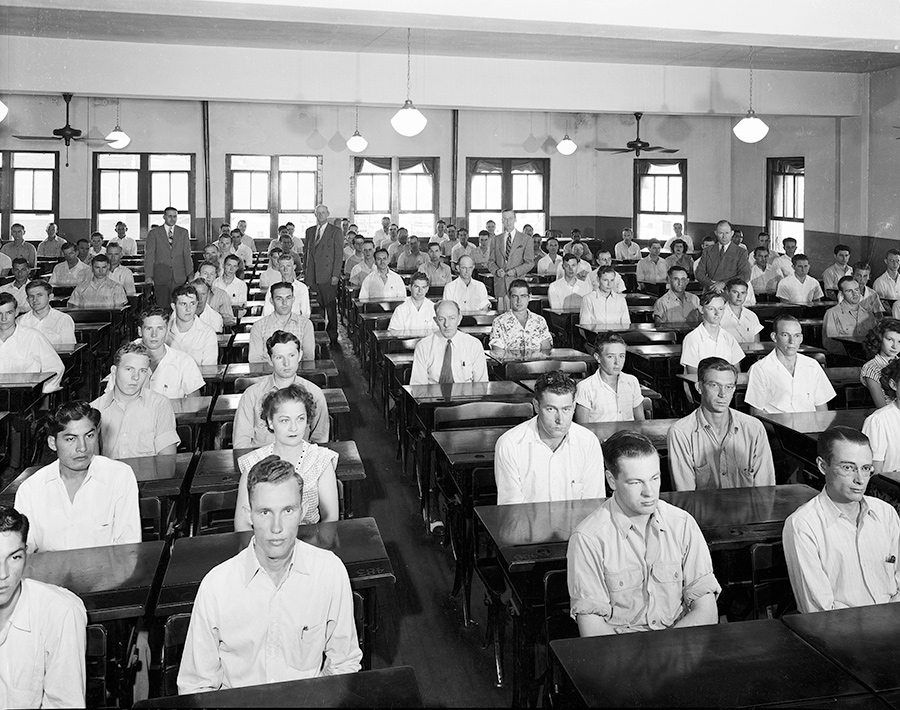
The Encyclopedia of Oklahoma History and Culture
HILL'S BUSINESS COLLEGE.
A post-secondary education institution, Hill's Business College was the longest-lived proprietary, private, non-accredited school of its type in Oklahoma. Private business schools developed in the United States in the 1890s and grew rapidly in the early 1900s. The movement responded to a national demand for trained office workers in American businesses. Students who could not afford to attend a regular four-year college often chose to attend business school. During those years high schools began to offer business courses (typing, shorthand, filing, bookkeeping), but larger corporations, needed even more highly educated staffs trained in accounting, business management, sales principles, and technologies. National "chains" of proprietary schools emerged, including Draughon's Business College, which also had a presence in Oklahoma City, Muskogee, and Okmulgee. These schools taught the basics of office practice as well as advanced courses in business. Nationally, in 1890, 80,000 students were enrolled in commercial classes, and by 1915 the number had more than doubled. The office worker force grew from 134,000 in 1900 to 1.9 million in 1930.
Established in Oklahoma City in 1907 by John M. Hill, who had earlier operated a business college in Missouri, Hill's Business College set up its curriculum and classrooms in the Eberle Building on Main Street. As with most private business schools, Hill's was centrally located, close to banks and high-rise buildings, and workers could attend classes in their off time. In 1923 Hill's Business College moved to 619 West Main Street, on the streetcar line and convenient to downtown offices and residential areas. By 1923 four business schools operated in Oklahoma City; of the two thousand students, half attended Hill's. The others went to Draughon's, Bates-Davis (later Blackwood-Davis) Private Business College, and Capital City Business College. These enterprises instilled students with the ethic of "modern work culture," a hallmark of the twentieth-century American business establishment.
In 1926 Hill's changed its name from college to university. In the 1960s it unsuccessfully attempted to become an accredited, degree-granting junior college. Due to declining enrollment, as junior colleges and state technical schools had become more popular with students, Hill's closed in 1985. Among those who received their post-secondary education at Hill's Business College were Oklahoma Gov. Roy V. Turner, Oklahoma U. S. Rep. Roscoe "Ross" Rizley, and actor Cathy O'Donnell.







